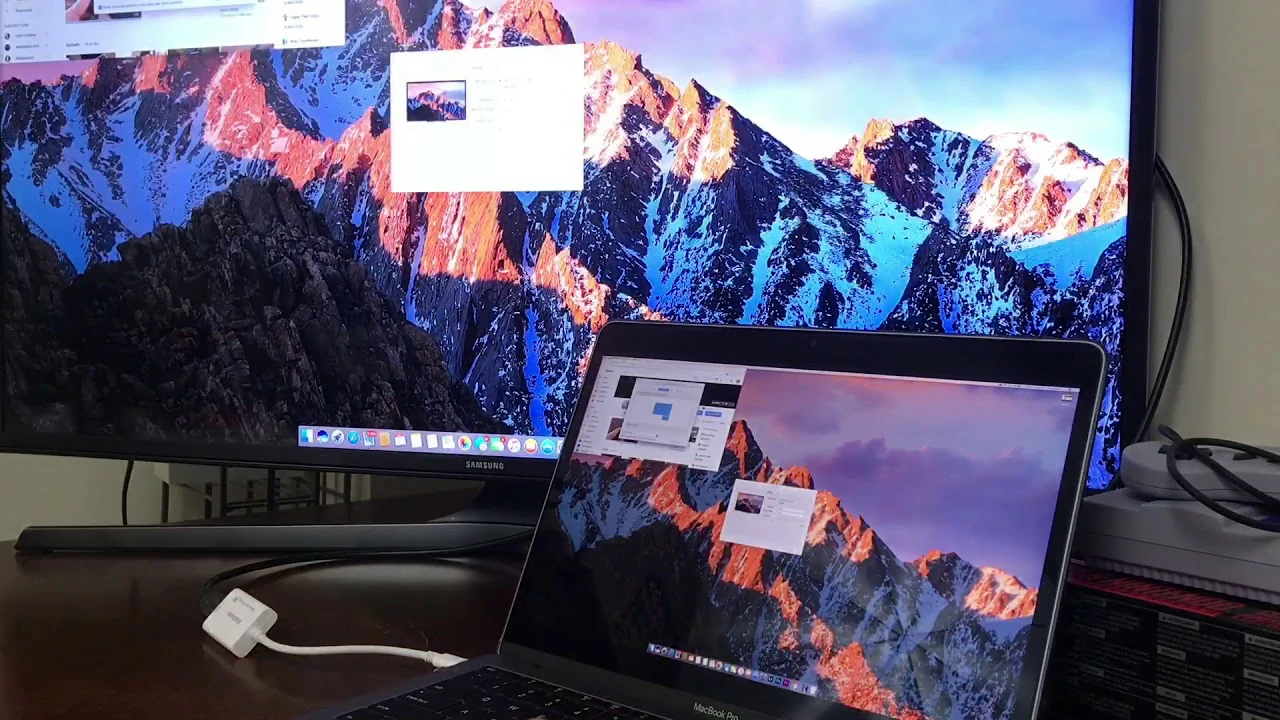- Your MacBook includes an external port to connect it with a monitor and be more productive
- On some occasions, you may experience problems when trying to connect the screen from there
- What are the recurring causes of this disorder and what are the ways to solve it?
If you have an Apple laptop, specifically a MacBook, you may have noticed that it includes a handy external port to make it easy for you to connect it to a monitor. This can be very useful if you want to view those contents on a big screen. However, no matter how simple the system may be, on some occasions it can suffer certain inconveniences. Fairly, Being one of the most common problems in these computers, this time we offer you some solutions if your MacBook does not detect the external screen so you can connect said monitor.
It is enough to take a look at the forums or social networks to verify that MacBooks do not always manage to detect when a screen is connected to them. If all you see is a dead, black or white monitor, probably one of the procedures that we are going to discuss below could help you.
Above all, considering that this obstacle can be frustrating in work or student settings. Fortunately, we have compiled certain solutions with which, for sure, you will be able to solve it.
Output to MacBook not detecting external display
The first time you experience this problem, you may panic, but better stay calm and try, exactly in the order in which we indicate it here, the following processes to solve the problem.
Check your cable connection
You were surprised by the enormous number of times in which everything is solved just by adjusting the ends of the connection. Make sure both ends of the cable are securely connected to the HDMI or Mini DisplayPort ports, as appropriate. Assuming they are well connected but there is no content streaming, then continue with the rest.
Restart your MacBook
There is also nothing unreasonable about restarting your MacBook. There may be damaged or corrupted files preventing the same image that is played on the small screen from being played on the big one.
A simple reset is a trick that solves more things than you thinkso before trying to fix it by resorting to more intrusive solutions, we recommend that you try your luck restarting without disconnecting the monitor.
If that doesn’t work, put the MacBook to sleep, and wait a couple of minutes before waking it up again.
Check your viewing preferences
We can never forget about misconfigurations or misconfigurations of the MacOS environment itself. It could perfectly happen that an external monitor does not respond because the brightness and resolution settings are
Luckily, easy to modify display preferences. This is how you can do it in seconds:
- Click on the Apple logo in the upper left corner of your screen
- Tap on System Preferences and then tap on Show
- Click on Gather screens in the lower right corner
- You will see the configuration of all the monitors connected to the system
- Adjust the brightness and resolution of the external monitor until the image appears
- If manual changes do not work, click on the Overscan or Underscan features
Also, you can search the internet for the external monitor’s configuration details as they might be specific. Many makes and models work with specific settings and if you don’t meet them, they don’t show anything.
Connect another monitor as a test
Since the problem can be reduced to a faulty monitor, if you have another on hand try connecting it. Obviously, you can do the opposite test, which would consist of connecting another MacBook to the same monitor. Regardless of how you can or want to do it, the idea is to rule out that any of the devices fail.
Update your operating system
An outdated operating system can be the source of all kinds of anomalies, even the most curious ones. Also of certain failures or errors that apparently should not be related to that origin.
- Click on the Apple logo in the upper left corner of your screen
- Tap Software Updates and follow the instructions to update.
conclusions
With an external monitor, you can turn your MacBook into a much more interesting and productive computer. In addition to creating space for new apps, you’ll avoid icon clutter on small screens.
Beyond that, external monitor connection problems are relatively common. Don’t worry. When you detect that an anomaly is occurring, go directly to the tutorials previously described.
Have you been able to troubleshoot your MacBook not detecting the external display? How did you do it?



